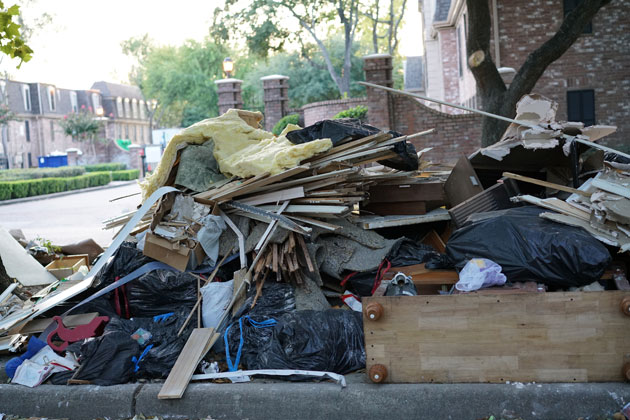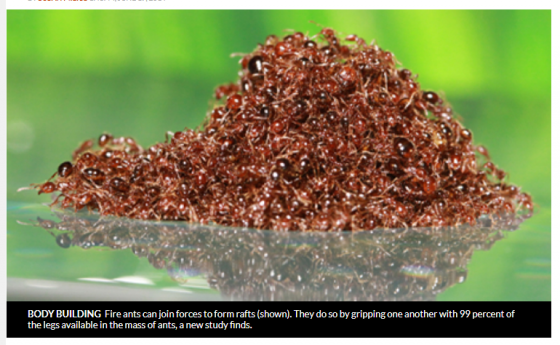The trillions of gallons of water dumped by Hurricane Harvey on Texas and Louisiana and Hurricane Irma in Florida have created major problems for agricultural producers in these states. The damage is expected to affect supply chains in for businesses including grocery chains, restaurants and livestock ranches as massive rainfall and flooding have interrupted harvesting cycles for crops like wheat, rice, corn and citrus fruits.
Short-term economic losses are already being estimated, while concerns persist about the storm’s long-term effect on crops, soil and machinery.
According to the United States Department of Agriculture’s (USDA) Economic Research Service, Louisiana and Texas are respectively the third and fifth-largest rice producers in the United States. While Louisiana planted almost 400,000 acres of rice this year, LSU AgCenter extension rice specialist Dustin Harrell said a recent survey revealed that only about 10,000 acres of first-crop rice remains left for harvest in south Louisiana. “The big unknown at the moment is the ratoon rice in that area,” Harrell said.
Ratoon rice is a staple for many companies which grows from the remnants of what has already been harvested. “[It’s] very important economically and it, too, can be lost if the ratoon stubble remains submerged for several days.”
For Texas growers, some experts estimate that a substantial portion of their rice crop is completely unusable. “I estimate 80% of the Texas rice crop (170,000 acres) was cut before the storm hit and the remainder is totally lost. Rain normally makes grain, but this is so much more than rain,” said Dwight Roberts, president and CEO of the U.S. Rice Producers Association located in Houston. “[As of Aug. 29] it’s hard to really even know the condition of harvested rice. We’ve got broken communication, no electricity for some areas, and flooded storage in places. There are so many unknowns.”
In a statement issued by the Food and Drug Administration (FDA) on Sept. 14, commissioner Scott Gottlieb acknowledged that rice harvested following Harvey faces risk of contamination. He said steps are being taken to prevent affected rice from being passed on to consumers or animals that could consume these crops, since broken grain can be used for pet food. He made particular mention of the Texas rice crop, saying that so far the agency had “not issued a ban on rice or any other food crops,” adding that rice grown in normal conditions and rice that has not been exposed to contaminated floodwaters may enter commerce. “Also, rice and other crops that were harvested and stored safely before storms hit should not be considered impacted by these events,” he said.
The storms affected another key commodity: citrus fruits. The USDA ranks Florida and Texas as the respective first- and third-largest producers of oranges and grapefruits, and the storms took a bite out of their crops as well. Florida’s grapefruit harvest was already estimated to be the lowest in 50 years, with growers and experts expecting near-35% percent losses in the top-producing districts. According to USA Today, specific varieties of oranges like navel and Valencia might see a 25-to-35% loss.
“That puts every grower on the East Coast in red ink” for this year, said Andy Taylor, senior vice president and chief financial officer for the world’s largest grapefruit processer, Vero Beach-based Peace River Citrus Products Inc. “Efforts to salvage some of that and get it processed into juice,” however, are unlikely to save even 10% of the fruit dropped, Taylor added.
During his press conference, Gottlieb said the FDA has dispatched experts to work with state regulators and directly with producers to address questions and concerns about mold and other contaminants.
He also recognized the need to get boots on the ground in order to assess the quality of the crops, “or else crops that might be safe—because they were not exposed to contaminated floodwaters—could age past their point of use.”
The FDA distributed resource guides in reaction to the storms. For more general information on evaluating the safety of food and animal food crops exposed to flood waters, visit here. A QA on crops harvested from flooded fields intended for animal food can be found here.
 Maria wiped out power on the island and destroyed infrastructure and cell towers, leading to massive shortages. Even though a waiver had been granted to Texas and Florida after Hurricanes Harvey and Irma, the Department of Homeland Security initially said there was no need to waive the restriction for Puerto Rico, as it would not address the issue of the island’s damaged ports.
Maria wiped out power on the island and destroyed infrastructure and cell towers, leading to massive shortages. Even though a waiver had been granted to Texas and Florida after Hurricanes Harvey and Irma, the Department of Homeland Security initially said there was no need to waive the restriction for Puerto Rico, as it would not address the issue of the island’s damaged ports.
 It’s difficult to find a photo of Houston, Miami, or any city hit by Hurricanes Harvey and Irma that doesn’t contain mountains of debris. As cleanup continues, more trash is piling up everywhere. Cities and towns are faced with a number of issues including costs, expediency, manpower and just what to do with all that trash.
It’s difficult to find a photo of Houston, Miami, or any city hit by Hurricanes Harvey and Irma that doesn’t contain mountains of debris. As cleanup continues, more trash is piling up everywhere. Cities and towns are faced with a number of issues including costs, expediency, manpower and just what to do with all that trash. Photo: ScienceNews
Photo: ScienceNews